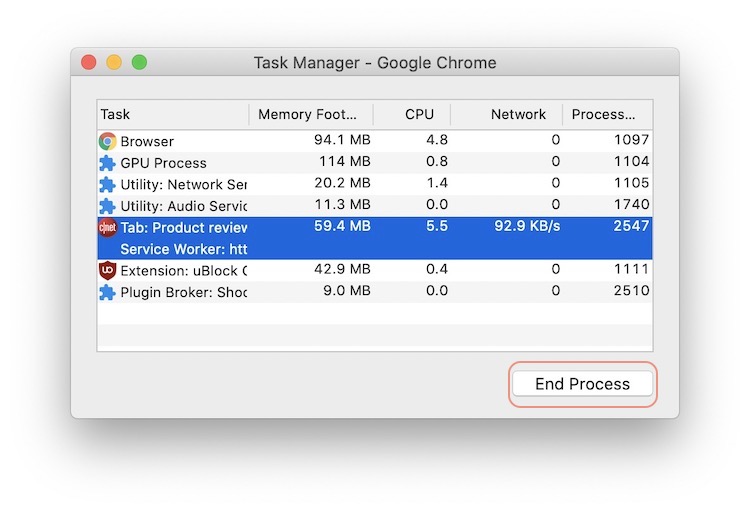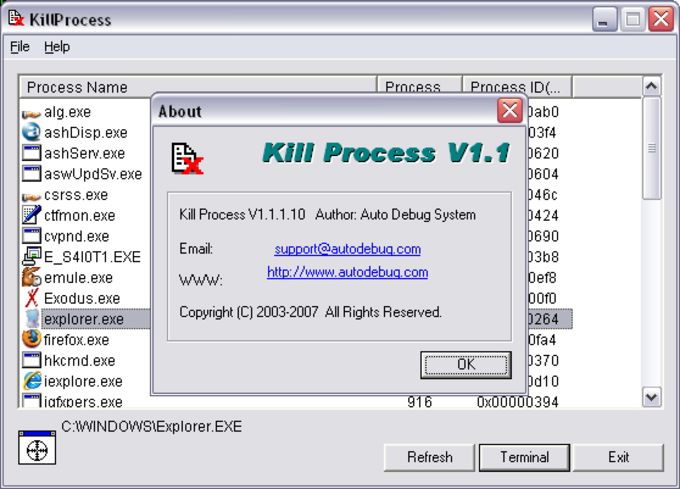

- #MAC TASK MANAGER KILL PROCESS HOW TO#
- #MAC TASK MANAGER KILL PROCESS FOR MAC#
- #MAC TASK MANAGER KILL PROCESS UPDATE#
- #MAC TASK MANAGER KILL PROCESS SOFTWARE#
- #MAC TASK MANAGER KILL PROCESS MAC#
Displayed at the bottom of the Activity Monitor window is the Energy Impact graph.
#MAC TASK MANAGER KILL PROCESS UPDATE#
You can change how often the graph updates by clicking on View and Update Frequency. Displayed at the bottom of the Activity Monitor window is the Memory Pressure graph, which helps illustrate the availability of memory resources. Memory: Clicking on this button sorts running processes by how much memory each process uses.Right next to the percentages of CPU capability currently used by system and user processes is a CPU load graph, which shows the percentage of CPU capability currently used by all system and user processes. Additionally, the percentages of CPU capability currently used by system and user processes are displayed at the bottom of the Activity Monitor window. CPU: Clicking on this button sorts running processes by the percentage of CPU capability used by each.
#MAC TASK MANAGER KILL PROCESS MAC#
Using these buttons, you can see how processes are affecting your Mac computer. There are several tabs at the top of the Activity Monitor window: CPU, memory, energy, disk, network, and cache.
#MAC TASK MANAGER KILL PROCESS HOW TO#
But once you understand what Activity Monitor does and how to use it to keep your computer running like a well-oiled machine, the initial bewilderment will be quickly replaced by an appreciation for its usefulness. Seeing Activity Monitor for the first time can be overwhelming as the application displays a plethora of information at the same time.
#MAC TASK MANAGER KILL PROCESS FOR MAC#
If you go to the Utilities folder under Applications on your Mac, that’s where you can find Activity Monitor, the official task manager for Mac computers. Activity Monitor Is the Task Manager for Mac This article introduces the official task manager in macOS, explains what it can do, and presents three alternative Mac task managers for users who would like to explore other options.

#MAC TASK MANAGER KILL PROCESS SOFTWARE#
Just like Windows has a task manager, called simply Task Manager, macOS also comes with an application that provides information about computer performance and running software and allows users to terminate processes if they start misbehaving forcibly. Task managers are useful applications that let you monitor what’s happening on your computer and provide you with the ability to shut down misbehaving processes and file system activity for read and write events on sensitive data. Applications sometimes crash unexpectedly, processes hang up and take up precious computing resources, and files get lost or corrupted because of bugs. To find this out just click right button and choose Open file location.Modern operating systems are not flawless. STEP 4 (optional):Find the location of programĪlso you may need to know the location of program or process which needed to stop. Make sure that you understand the purpose of the process you want to end terminating system processes may cause a system malfunction.

However, ending the process of a nonresponsive application is sometimes the only way you can shut it down. Task Manager can help you exit such programs, but you may lose unsaved information when you use this method.

This feature is useful when you have an open program that is no longer responding to input commands. To exit a program, select the program and click the End Task button, or click right button and choose End Task. You may also need to look at content of Details tab. To see detailed information about programs and hidden processes just click More Details at the bottom of Task Manager. Use this tab to exit programs that have frozen and can no longer be closed normally. Applications that run minimized in the System Tray (such as antivirus software) won’t show up on this list. You’ll see a list of the programs (“tasks”) currently running on your machine. Press Ctrl-Alt-Delete, and then click Task Manager.Right-click an empty area of the taskbar, and then click Task Manager.STEP 1: Open Task Manager using any of the following methods: You can use Task Manager to start and stop programs and to stop processes. Windows Task Manager enables you to monitor and manage the applications, processes, and services currently running on your PC.


 0 kommentar(er)
0 kommentar(er)
